Generative AI for Enhanced Observability: Best Tools and Benefits
- August 21, 2024
-
3648 Views
- by Ishan Vyas
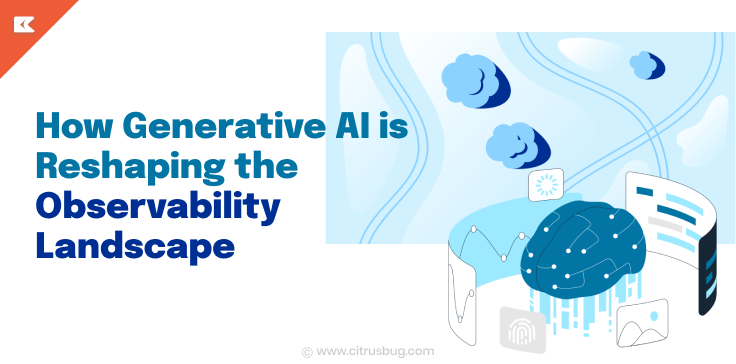
Introduction
In today’s complex IT environments, the sheer volume and complexity of data pose problems for traditional observability systems. This often leads to reactive problem-solving, overlooked oddities, and inefficiencies.
Conventional observability systems gather and evaluate data from multiple sources. Still, they must overcome several major obstacles, such as data overload, system complexity, the need for manual intervention, and the consequences of adopting a reactive approach.
Generative AI is revolutionizing observability by improving anomaly detection, automating data analysis, and offering predictive insights. Using machine learning algorithms, generative AI creates new data instances that mimic current datasets. It improves system monitoring using pattern recognition, historical data analysis, and insight generation.
The Need of Generative AI in Observability
Generative AI is a subset of artificial intelligence whereby new material is produced through learning from past data. Generative AI statistics show that the global market is expected to grow at a compound annual growth rate (CAGR) of 34.6%. By 2031, it is projected to reach $126.5 billion, with sectors like healthcare, finance, and creative industries leading the adoption. It uses machine learning techniques to recognize patterns, relationships, and structures inside big datasets, unlike conventional AI, which follows predetermined rules. Analyzing this data can create fresh, reasonable data instances with traits of the original dataset.
For example, an e-commerce platform whose user traffic swings often can use generative AI to predict peak buying times using prior user behavior and traffic patterns. This helps the platform to effectively distribute resources, reduce downtime, and improve the user experience. Apart from guaranteeing better operations, this predictive capacity allows for user encounters to be customized based on expected behavior.
Integrating generative AI will help companies go from reactive to proactive approaches, thereby greatly enhancing efficiency and the decision-making process. This metamorphosis leads to improved performance, lower risks, and better overall results across many sectors.
How Generative AI Empowers Observability
Generative AI development greatly improves observability by analyzing system data and anticipating potential issues. This cutting-edge AI technology continuously analyzes the patterns of behavior within a system. Through continuous learning from this data, generative AI has the ability to swiftly and precisely identify anomalies.
In addition, generative AI is highly skilled at discovering concealed correlations and underlying causes of problems that conventional methods may overlook. In a complex IT environment, generative AI has the ability to detect even the smallest configuration error that could potentially cause major performance problems in the future.
Generative AI’s predictive capabilities in observability are truly transformative. It enables proactive maintenance by analyzing historical data and identifying patterns that occur before system failures. In the manufacturing industry, generative AI has the ability to anticipate machine failures by analyzing sensor data patterns. This enables timely maintenance and helps avoid expensive disruptions.
Benefits of Generative AI in Observability
Implementing generative AI for observability provides the following benefits:
1. Enhanced Efficiency
Generative AI significantly improves the efficiency of observability systems by automating many daily tasks. For establishing alerts, data analysis, and root cause investigation, traditional observability calls for significant human interaction.
Generative AI runs these tasks, therefore saving IT staff’s time and effort. This helps developers concentrate on more strategic projects, resulting in increased general efficiency and output.
2. Proactive Problem-Solving
Generative AI allows organizations to shift from reactive to proactive problem-solving. Many times, traditional observability systems solve problems only once they have occurred, causing possible downtime and performance reduction.
Generative AI, on the other hand, lets developers foresee possible problems before they affect the system, therefore enabling proactive maintenance and problem-fixing.
3. Deeper Visibility and Insights
Generative AI’s capacity to offer broader visibility and insights into system performance is among its most significant advantages for observability. It can find latent trends and connections that conventional approaches miss by always learning from historical data. By learning regular system behavior patterns, generative AI can successfully detect abnormalities and outliers that may suggest possible problems. This is especially useful for infrastructure monitoring, container monitoring and cloud monitoring tools where spotting anomalous activity is critical to ensuring cloud system stability.
4. Reduced Downtime
The predictive power of generative AI significantly lowers system downtime. It guarantees that systems stay operational and performance problems are reduced by foreseeing possible breakdowns and allowing proactive maintenance. This leads to higher levels of customer satisfaction and better user experiences.
5. Increase in ROI
Generative AI’s predictive power and automation help to lower running costs and improve system dependability, therefore boosting the return on investment (ROI).
The 2023 Observability Forecast reported that companies get a median return of $2 for every $1 invested in observability; 41% of respondents said their observability investments yield annual values of more than $1 million.
Applications of Generative AI in Observability
Innovative system monitoring and optimization techniques from generative AI have transformed observability. Let’s examine generative AI’s observability applications and its effects on IT infrastructure management.
1. Anomaly Detection
The sheer volume and complexity of data make it difficult for traditional approaches to spot minute anomalies. Generative AI excels in this field by learning from past data to identify trends in typical behavior. It can then effectively identify variations from these trends, thereby warning of potential problems before they become major ones.
Generative AI, for instance, can track real-time transactions in a financial institution and use odd transaction patterns to spot fraudulent activity.
2. Root Cause Analysis
Root cause analysis in the context of an IT system is the identification of its fundamental causes of problems. Generative AI improves this approach by revealing latent relationships and dependencies between several system components. It can identify the precise cause of a problem using large data analysis, greatly saving the time needed for troubleshooting.
3. Performance Optimization
Through constant performance data analysis, generative AI can offer insights and suggestions for increasing system efficiency. This ensures the best use of resources, workload balancing, and identification of performance-haunting obstacles.
It can, for example, propose ideal setups and resource allocation in a cloud computing system to improve general performance and save running expenses.
4. Predictive Maintenance
Predictive maintenance takes advantage of generative AI’s ability to proactively schedule maintenance tasks and forecast potential problems. It can estimate when and where problems are most likely to arise by analyzing previous data and identifying patterns that show prior to system failures.
Manufacturing, for example, can employ predictive maintenance to increase equipment life and prevent unexpected machine malfunctions.
5. Synthetic Data Generation for Testing
Testing and evaluating observability techniques and tactics greatly benefit from synthetic data created by generative AI, which replicates real-world events.
By simulating different situations and events using this synthetic data, teams may test the durability and performance of their systems without affecting their actual surroundings.
6. Adaptive Visualization Techniques
Generative AI-powered adaptive visualizing methods improve data presentation and interpretation.
Conventional dashboards and visualizations do not always effectively present complex data and may be static. Generative AI can dynamically generate visual representations that adapt to the data under analysis, thereby enhancing user comprehension of patterns, correlations, and anomalies.
It also enhances AI-powered survey analysis, enabling organizations to interpret customer or user feedback at scale with intuitive visual insights. These dynamic visuals help stakeholders make informed decisions quickly and confidently.
Tools Using Generative AI in Observability
Let’s explore the top six generative AI tools that offer exceptional observability features:
1. Prometheus
Originally created at SoundCloud, Prometheus is an open-source system monitoring and alerting toolkit.
Features
- Multidimensional Data Model: Prometheus utilizes its multidimensional data model using a flexible query language (PromQL), therefore allowing comprehensive and dynamic searches.
- Time Series Data Collection: Time series data collection uses a pull model, so it scrapes metrics from instrumentation targets.
- Alerting and Notification: It boasts a robust alerting system that allows users to set up alert criteria and disseminate notifications across multiple channels.
Pricing
- Free
2. Grafana
Renowned for its broad dashboard customization and visualization capabilities, Grafana is an open-source tool for monitoring and observability.
Features
- Dashboard Customization: Highly flexible and dynamic dashboards are able to show data from many sources.
- Data Source Integration: Supports integration with multiple data sources, including Prometheus, Elasticsearch, and many others.
- Alerting and Notifications: The tool’s alerting feature allows users to create alarms for important indicators, enabling teams to react quickly to problems.
Pricing
- Free Forever
- Pro Tier: Usage-Based Pricing
- Advanced: $299/month
3. Middleware
Middleware is an advanced full stack cloud observability tool that integrates AI-driven insights to provide application performance monitoring, aws monitoring, real-time monitoring and proactive alerting.
Features
- AI-Driven Insights: Middleware uses Generative AI to analyze data and provide actionable insights, reducing the need for manual intervention.
- Real-Time Monitoring: Real-time monitoring of systems and applications generates real-time data and alerts on abnormalities.
- Integration: It seamlessly integrates with existing observability systems, enhancing their capabilities through artificial intelligence.
Pricing
- Free Forever
- Pay-As-You-Go
- Enterprise Plan: Custom Pricing
4. Datadog
Datadog provides a complete platform for analytics and monitoring cloud apps with deep insights into infrastructure and application performance.
Features
- Comprehensive Monitoring: Provides a holistic picture of system performance by encompassing log, application, and infrastructure monitoring.
- AI-Powered Alerts: Make proactive problem solving possible by utilizing AI to anticipate problems and identify anomalies.
- User-Friendly Interface: Monitoring and analyzing data is made simple with intuitive dashboards and visualization tools.
Pricing
- Free
- Pro: $15/month
- Enterprise: $23/month
5. New Relic
New Relic provides observability with AI-driven insights, offering comprehensive monitoring of applications and infrastructure.
Features
- Full-Stack Observability: Monitors end-to-end performance across applications and infrastructure.
- AI-Driven Insights: Uses predictive analytics and anomaly detection to identify and resolve issues before they impact users.
- Customizable Dashboards: Allows users to create tailored views and reports for specific monitoring needs.
Pricing
- Data + Users = Your Price
6. Dynatrace
Dynatrace offers AI-powered monitoring and analytics for complex IT environments, providing real-time insights and automated root cause analysis.
Features
- AI-Powered Monitoring: Automates anomaly detection and root cause analysis, reducing the time to resolution.
- Real-Time Insights: Provides continuous monitoring and real-time alerts, ensuring high system availability.
- Scalable: Designed for large and complex environments, offering robust scalability.
Pricing
- Pay-As-You-Go Pricing
The Future of Generative AI in Observability
Moving forward, unsupervised anomaly detection developments will shape generative AI in terms of observability. This entails artificial intelligence models that can detect anomalies without reference to labeled training data, hence streamlining and increasing the accuracy of the detection process.
More exact findings will come from generative AI models catered to particular sectors or fields. These specialized models allow for greater observability by better understanding the distinctive traits and difficulties of several domains.
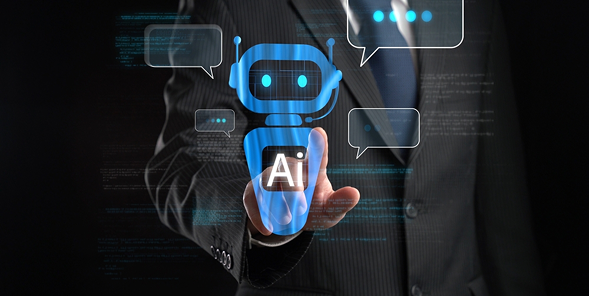
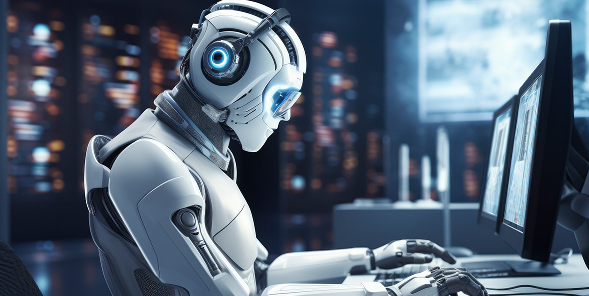

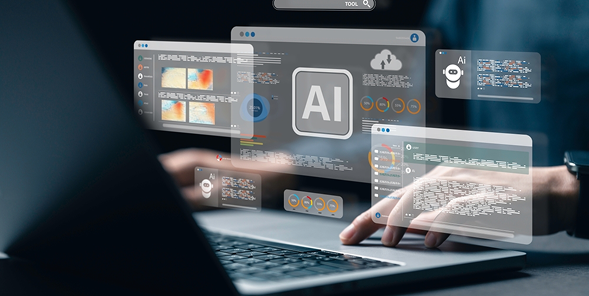

 SaaS Development
SaaS Development Web Application Development
Web Application Development Mobile Application Development
Mobile Application Development Custom Software Development
Custom Software Development Cloud Development
Cloud Development DevOps Development
DevOps Development MVP Development
MVP Development Digital Product Development
Digital Product Development Hire Chatbot Developers
Hire Chatbot Developers Hire Python Developers
Hire Python Developers Hire Django Developers
Hire Django Developers Hire ReactJS Developers
Hire ReactJS Developers Hire AngularJS Developers
Hire AngularJS Developers Hire VueJS Developers
Hire VueJS Developers Hire Full Stack Developers
Hire Full Stack Developers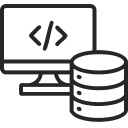 Hire Back End Developers
Hire Back End Developers Hire Front End Developers
Hire Front End Developers AI Healthcare Software Development & Consulting
AI Healthcare Software Development & Consulting Healthcare App Development
Healthcare App Development EHR Software Development
EHR Software Development Healthcare AI Chatbot Development
Healthcare AI Chatbot Development Telemedicine App Development Company
Telemedicine App Development Company Medical Billing Software Development
Medical Billing Software Development Fitness App Development
Fitness App Development RPM Software Development
RPM Software Development Medicine Delivery App Development
Medicine Delivery App Development Medical Device Software Development
Medical Device Software Development Patient Engagement Software Solutions
Patient Engagement Software Solutions Mental Health App Development
Mental Health App Development Healthcare IT Consulting
Healthcare IT Consulting Healthcare CRM Software Development
Healthcare CRM Software Development Healthcare IT Managed Services
Healthcare IT Managed Services Healthcare Software Testing services
Healthcare Software Testing services Medical Practice Management Software
Medical Practice Management Software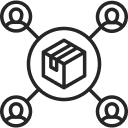 Outsourcing Healthcare IT Services
Outsourcing Healthcare IT Services IoT Solutions for Healthcare
IoT Solutions for Healthcare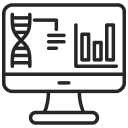 Medical Image Analysis Software Development Services
Medical Image Analysis Software Development Services Lending Software Development Services
Lending Software Development Services Payment Gateway Software Development
Payment Gateway Software Development Accounting Software Development
Accounting Software Development AI-Driven Banking App Development
AI-Driven Banking App Development Insurance Software Development
Insurance Software Development Finance Software Development
Finance Software Development Loan Management Software Development
Loan Management Software Development Decentralized Finance Development Services
Decentralized Finance Development Services eWallet App Development
eWallet App Development Payment App Development
Payment App Development Money Transfer App Development
Money Transfer App Development Mortgage Software Development
Mortgage Software Development Insurance Fraud Detection Software Development
Insurance Fraud Detection Software Development Wealth Management Software Development
Wealth Management Software Development Cryptocurrency Exchange Platform Development
Cryptocurrency Exchange Platform Development Neobank App Development
Neobank App Development Stock Trading App Development
Stock Trading App Development AML software Development
AML software Development Web3 Wallet Development
Web3 Wallet Development Robo-Advisor App Development
Robo-Advisor App Development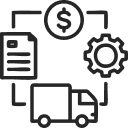 Supply Chain Management Software Development
Supply Chain Management Software Development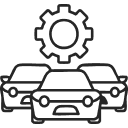 Fleet Management Software Development
Fleet Management Software Development Warehouse Management Software Development
Warehouse Management Software Development LMS Development
LMS Development Education App Development
Education App Development Inventory Management Software Development
Inventory Management Software Development Property Management Software Development
Property Management Software Development Real Estate CRM Software Development
Real Estate CRM Software Development Real Estate Document Management Software
Real Estate Document Management Software Construction App Development
Construction App Development Construction ERP Software Development
Construction ERP Software Development





